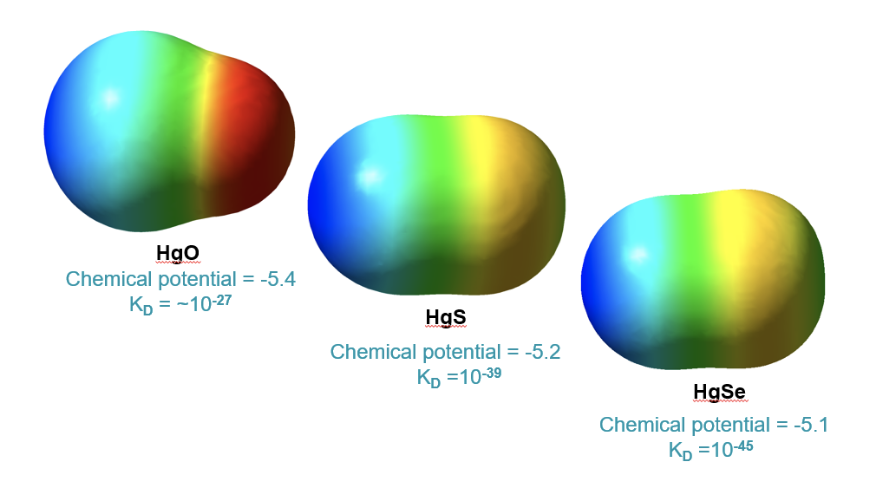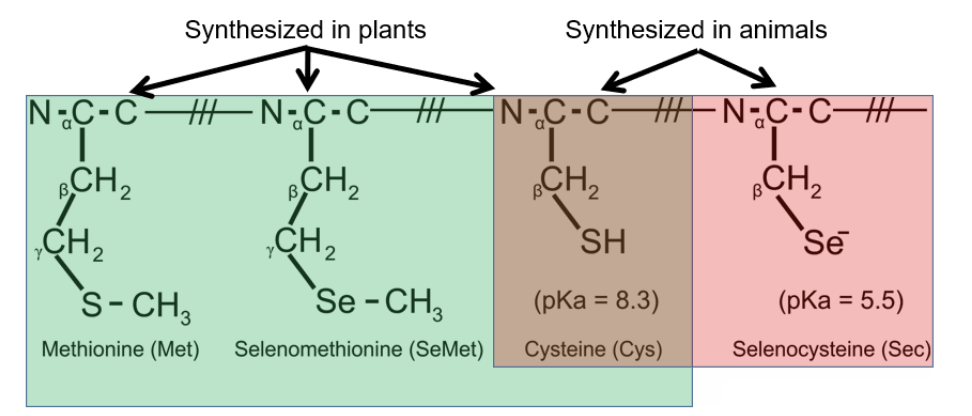Protecting Against Soft Electrophile Toxicants
Soft Electrophiles
Soft electrophiles include mercury, cadmium, and other metallic toxicants as well as certain organic agents. Soft electrophiles react with thiols, but their toxicity appears to be exclusively due to their million-fold higher reactivity with selenium.
Mercury (Hg) binding to oxygen is far weaker than its affinity for sulfur (S) which is a million times weaker than its affinity for selenium (Se).
In addition to mercury, cadmium and other metallic and organic electrophiles are neurotoxic. Although soft electrophiles were thought to cause toxicity by binding to thiols (SH groups), they irreversibly inhibit selenoenzymes and thus impair vital functions in tissues.
Protein incorporation of methionine or selenomethionine occurs non-specifically since they are not distinguished in plant or animal metabolism. Plants and animals both synthesize cysteine, but only animals make selenocysteine. Because it is so important in the healthy activities of brain and endocrine tissues, selenocysteine is made in all cells of all vertebrates.
Even during severe shortages of dietary selenium, brain and endocrine tissues are supplied with selenium and maintain their health. The only insults that can impair selenium's activities in these tissues are high exposures to mercury or other soft electrophiles.
Paradigm Change
Although humanity is exposed to a multitude of potentially toxic agents from diets and their environments, toxicology previously had to apply a reductionist approach that examined each type of exposure as if it occurred in isolation. Even before recognition of the “selenium-sequestration” mechanism that soft electrophiles share, this approach was recognized as limited an inappropriate.
Now that we are aware that mercury, cadmium, and certain other metallic and organic soft electrophiles share the same mechanism of toxicity involving reactions that induce a conditioned selenium deficiency, the combined effects of concomitant exposures and their potential synergistic effects must be evaluated in aggregate. Exposure risk assessments will also need to include consideration of the selenium status of the exposed individuals.
Sage Green NRG’s scientists are providing advice on these public and environmental health considerations for medical practice and research groups, stakeholder industries, and national and international government organizations around the world.
References
- Soft Electrophile Inhibition of Selenoenzymes in Disease Pathologies
- Effects of Soft Electrophiles on Selenium Physiology in Free Radical Biology and Medicine
- Dr. Nick Ralston's Selenium Mercury Research
- The Career of Dr. Nick Ralston: Discovering the Connection Between Mercury and Selenium
- 2023 FAO/WHO Expert Consultation on the Risks and Benefits of Fish Consumption
Additional Links



